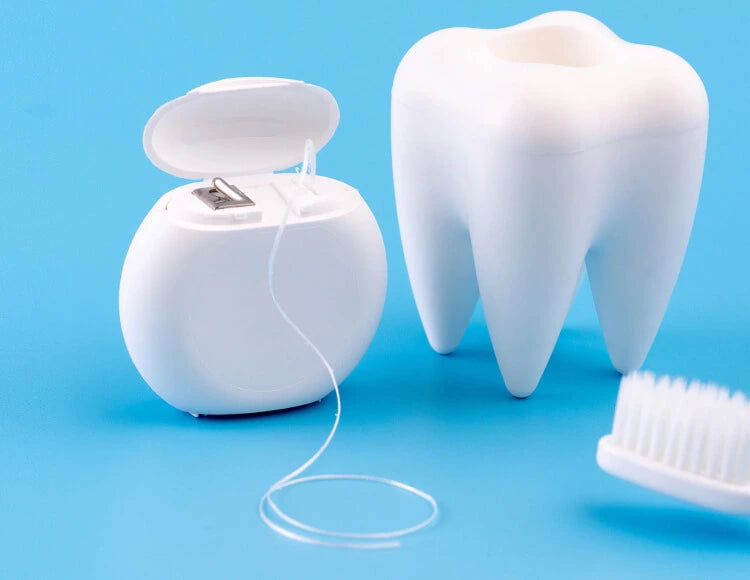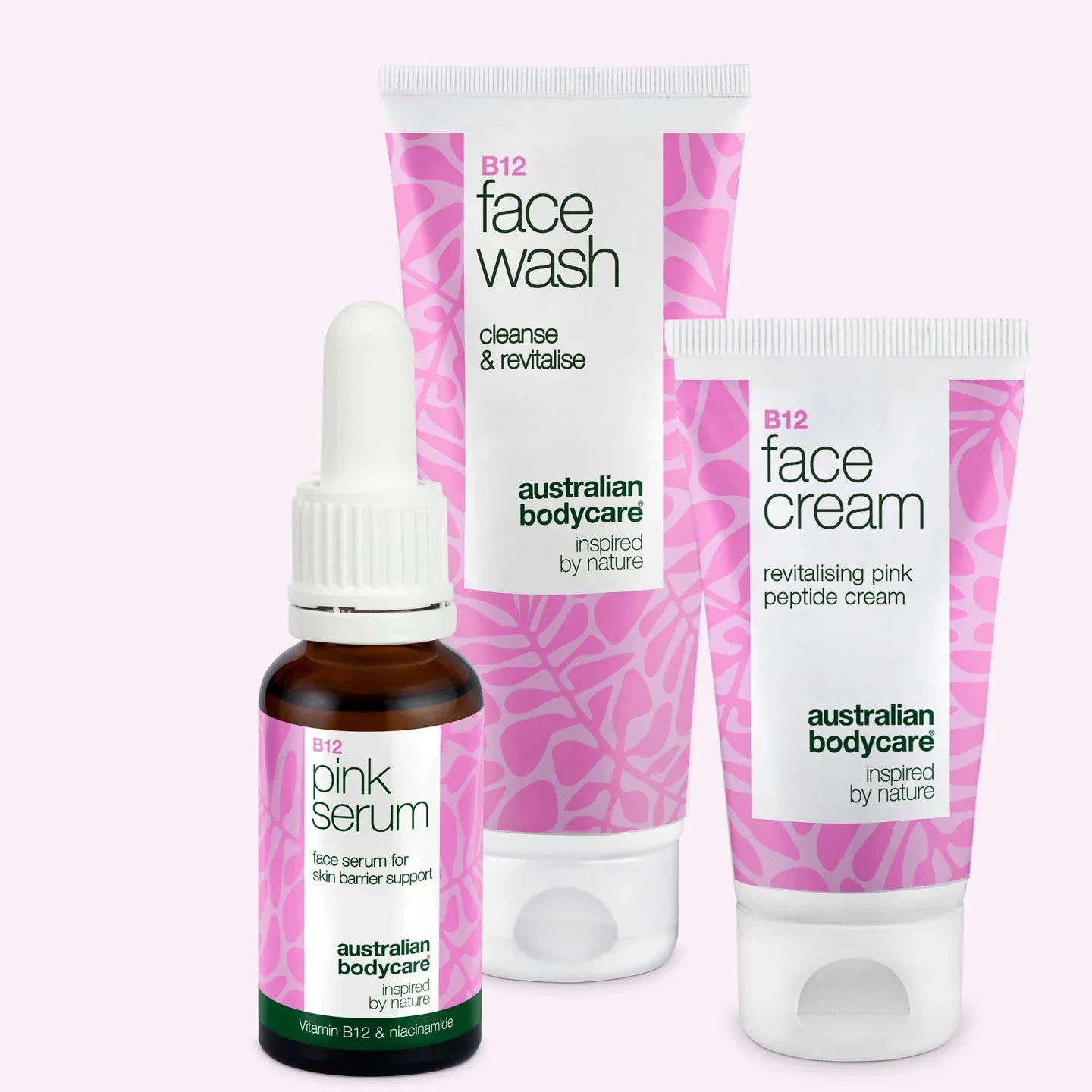Tips for Proper Flossing to Maintain Optimal Oral Hygiene
Using floss correctly is crucial for maintaining good oral hygiene. Flossing helps remove plaque and food particles between teeth, which are key steps in preventing dental issues.
Many people think it's just about grabbing any floss and quickly using it once a day. But there's more to it. For example, floss comes both waxed and unwaxed, and some types contain PFAS, which can be harmful to both health and the environment.
Table of contents
Why is Flossing Important for Oral Hygiene?
Flossing helps remove food particles and bacteria between teeth, areas where a toothbrush often can't reach. Without flossing, plaque builds up, leading to cavities and gum disease.
Using floss daily reduces the risk of plaque buildup and helps keep your mouth healthy.
Cleaning between teeth also removes food particles that would otherwise break down by bacteria, causing bad breath. Proper flossing technique protects gums from damage by gently cleaning under the gum line.
This is important to avoid periodontitis, a severe form of gum disease. Simple actions like daily flossing can make a big difference in your oral health.

How to Use Floss Correctly
Use thin pieces of floss to gently glide between your teeth without forcing. Hold the floss against each tooth and move it up and down to remove food particles and plaque.
Choosing the Right Type of Floss
Choosing the right floss is crucial for your oral hygiene. Thin floss is ideal for those with very tight spaces between their teeth, while flat floss may be better if you have larger gaps.
For some, water flossers can be a good alternative, especially if you find traditional floss hard to use. No matter the type, make sure to choose a floss that doesn’t contain PFAS to avoid unnecessary chemicals in your daily routine.
Many people also prefer waxed floss as it slides more easily between teeth and reduces the risk of damaging gums. If you're vegan, there are vegan options available that don't contain animal-derived ingredients.
Remember, the effectiveness of your choice depends on how and how often you use the product. Proper use effectively removes plaque and food particles, helping to maintain a healthy mouth.
How Much Floss to Use
You should cut about 18 inches (45 cm) of floss each time you clean your teeth. This length gives you enough to thoroughly clean between all your teeth without reusing dirty floss.
Switch to a clean section of the string as you move from one gap to the next to avoid spreading bacteria and food particles around your mouth.
Using the right amount helps prevent cavities and tartar by effectively removing hidden debris. Remember, clean sections ensure each tooth gets the best possible cleaning routine.
This simple step significantly boosts your oral hygiene.
Flossing Techniques for Between Teeth
To floss between teeth correctly and effectively, follow these techniques:
1. Start by cutting a suitable length of floss, about 18 inches.
2. Wrap the floss around your fingertips, mainly your index fingers, and keep it tight.
3. Gently move the floss up and down between your teeth using a gentle zigzag motion to remove plaque and food particles.
4. When switching to a new tooth, use a clean section of floss to avoid transferring bacteria.
5. Be careful not to harm your gums during cleaning to avoid irritation or sores.
These techniques ensure effective and gentle use of floss for optimal oral hygiene.
Avoid Gum Damage
When flossing, avoid cutting into your gums. Use a gentle, upward motion to remove plaque and food particles from between teeth. Be cautious not to harm the delicate tissue around your teeth, which can prevent gingivitis and other oral hygiene issues.
When and How Often to Floss
It's recommended to floss at least once a day, preferably before bedtime. This helps remove plaque and food particles between teeth, which can lead to cavities and gingivitis.
It's also important to floss on children, especially when their back teeth start to touch. By doing this from an early age, you can instill the good habit of regular flossing for optimal oral hygiene.
Additional Tips for Optimal Oral Hygiene with Floss
Supplementary use of toothpicks or interdental brushes provides extra cleaning between teeth. Mouthwash can be an effective addition to flossing, and regular dentist visits are crucial for maintaining good oral hygiene.
Supplementary Use of Toothpicks or Interdental Brushes
Supplementary use of toothpicks or interdental brushes can help remove plaque and food particles between teeth. These tools can complement flossing and contribute to maintaining optimal oral hygiene.
By including toothpicks or interdental brushes in your daily oral care routine, you can ensure that you reach areas where floss might not be as effective. This helps prevent plaque and food buildup, which can lead to cavities, periodontitis, and other dental issues.
Using these supplementary tools along with floss and regular brushing will help keep your teeth and gums healthy and reduce the risk of dental problems.
Mouthwash as a Supplement
Mouthwash can help remove bacteria and food particles that might have been missed during flossing and brushing. The extra rinse with mouthwash can help prevent gum issues by providing an additional cleaning effect in your mouth.
It's recommended to use mouthwash after flossing and brushing for maximum effect.
Regular Dentist Visits
Regular dentist visits are crucial for maintaining optimal oral hygiene and preventing dental problems. The dentist can identify early signs of cavities, gum issues, and other oral health problems, which can prevent more serious conditions later on.
These regular visits also allow for professional cleaning, removing plaque and tartar that can be difficult to remove at home.
Sticking to regular dentist visits is an essential part of maintaining a healthy mouth. Professional advice and treatment from the dentist can help keep your teeth and gums healthy, promoting long-term oral hygiene and overall health.
Conclusion
Proper use of floss is crucial for maintaining optimal oral hygiene. Cleaning between teeth removes plaque and food particles that a toothbrush can't reach. Choose the right type of floss, use it daily, and avoid damaging your gums.
Feel free to supplement with interdental brushes and mouthwash for extra cleaning. Remember, regular dentist visits are important for maintaining a healthy mouth.
FAQ
How do you use floss correctly?
To achieve optimal oral hygiene, use floss by gently guiding it between teeth and along the gum line to remove food particles and plaque that can cause dental issues like periodontitis.
How often should you use floss?
You should use floss at least once daily. It’s best to do it in the evening before bed to remove plaque and food particles between teeth that your toothbrush can't reach.
Should you floss before or after brushing your teeth?
It's recommended to floss before brushing to loosen and remove particles between teeth so the fluoride from toothpaste can better reach between teeth and strengthen enamel.
Are all types of floss safe to use?
Choose floss without PFAS to avoid harmful chemicals. It's important to select products from the pharmacy or other reliable sources that offer safe over-the-counter medications and oral hygiene products.
Can I use a floss pick instead of regular floss?
Yes, a floss pick can be a convenient alternative to regular floss, especially for those who find traditional floss hard to handle. Floss picks promote ease of use and efficiency in daily oral hygiene.
Why is it important to use floss regularly?
Regular flossing helps prevent plaque buildup and protects against periodontitis and cavities by effectively removing food particles and plaque that your toothbrush can't reach.
Why do my gums bleed when I floss?
Gum bleeding when flossing can be due to several reasons, including gingivitis or simply not flossing regularly. If your gums aren't used to flossing, they can be tender and bleed initially. Continue flossing daily, and the bleeding should subside after a few days as your gums get healthier. If bleeding persists, consult your dentist.



